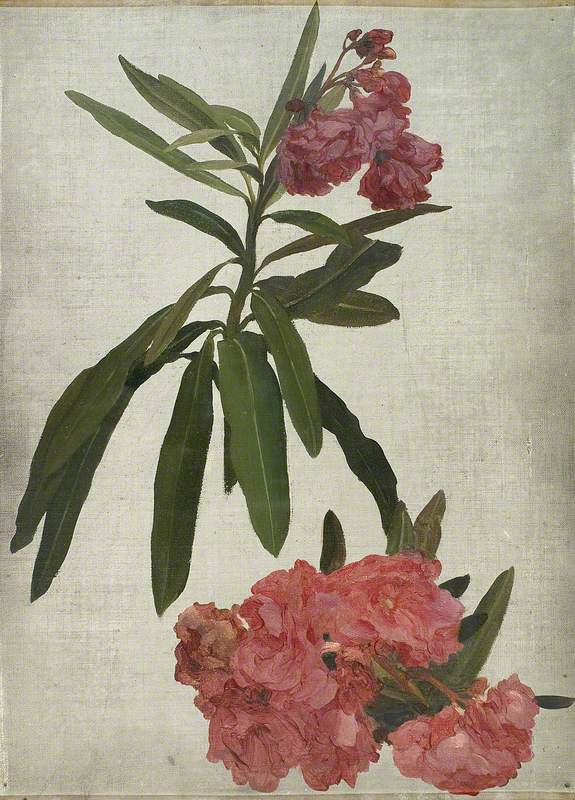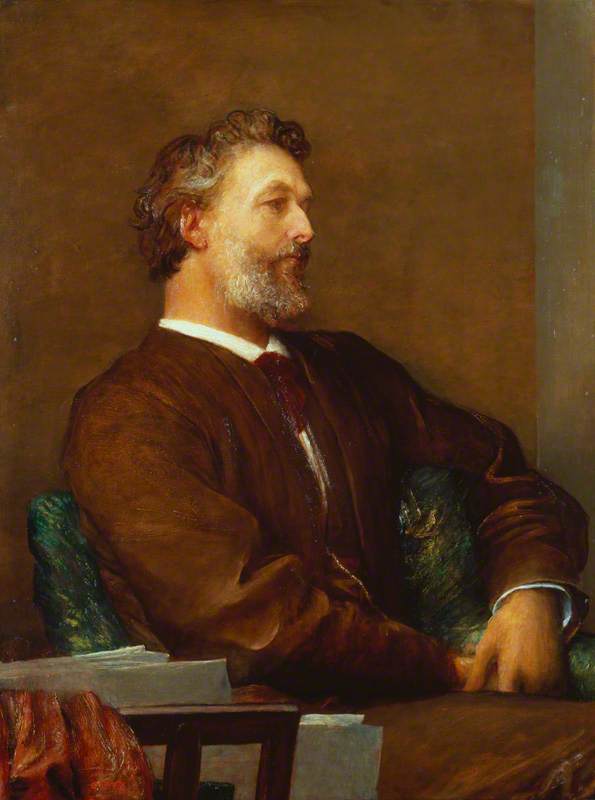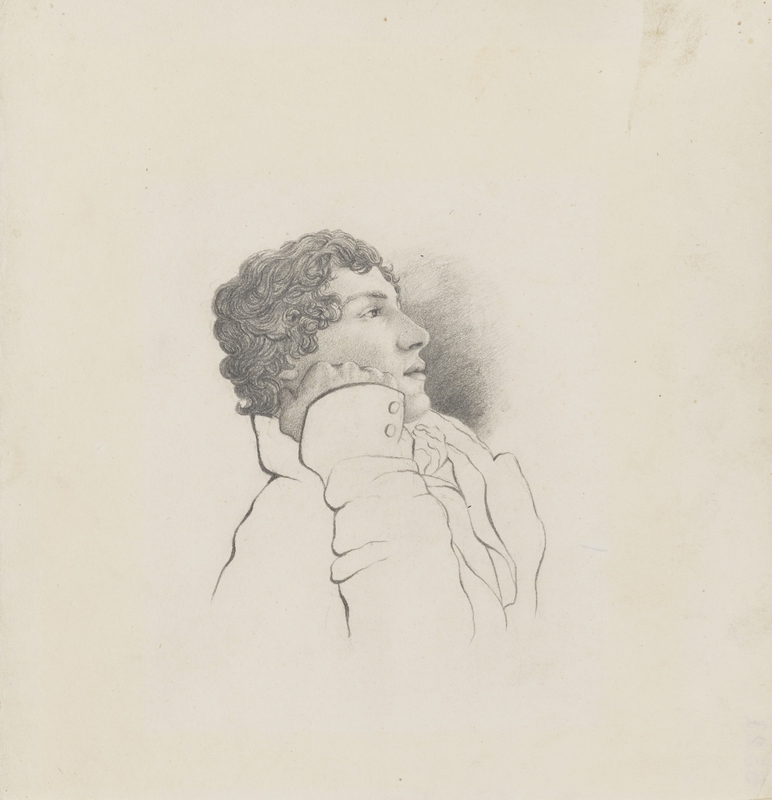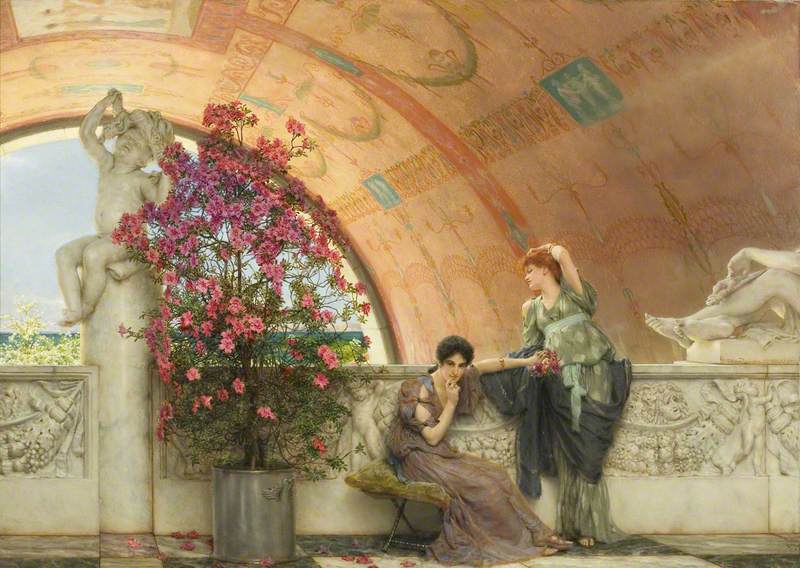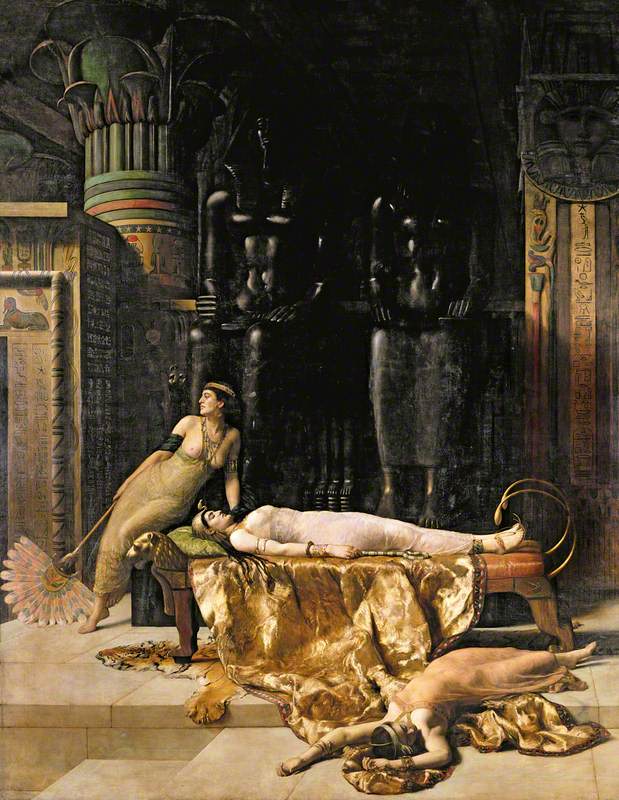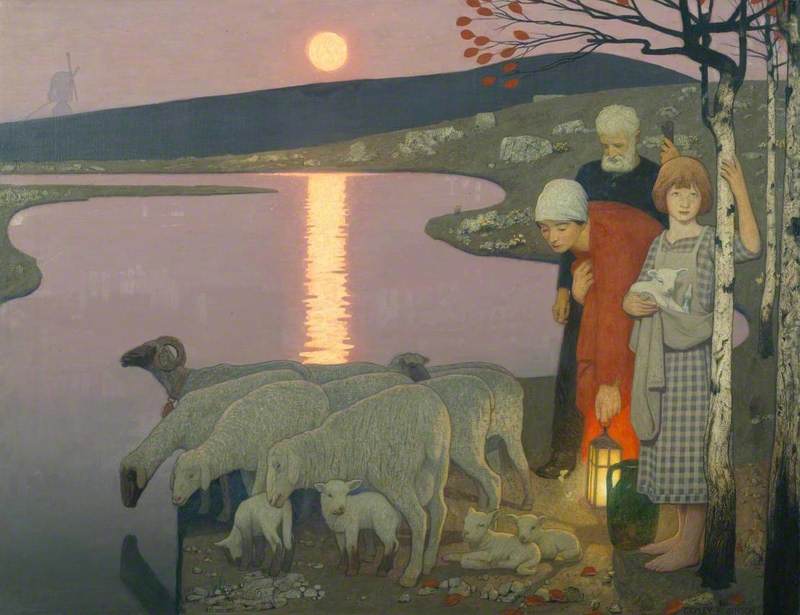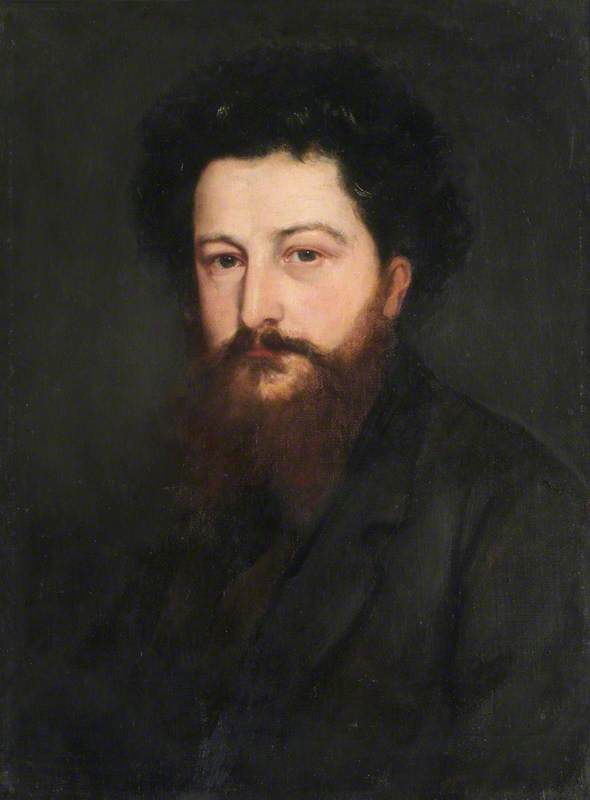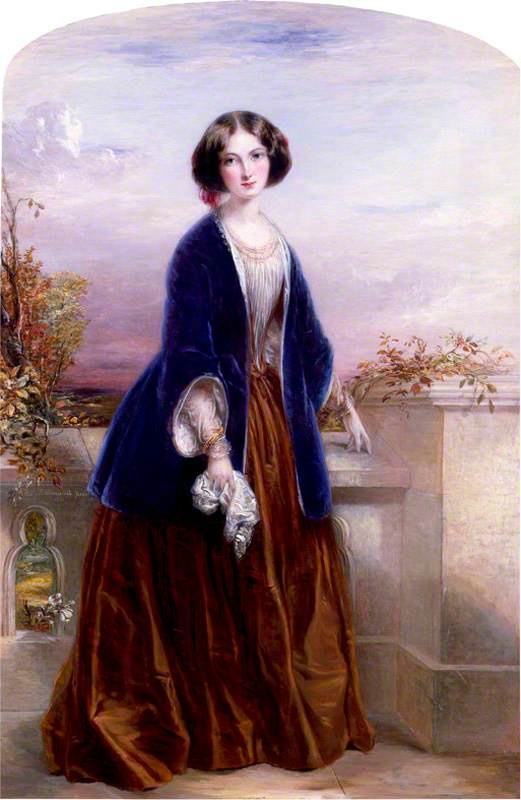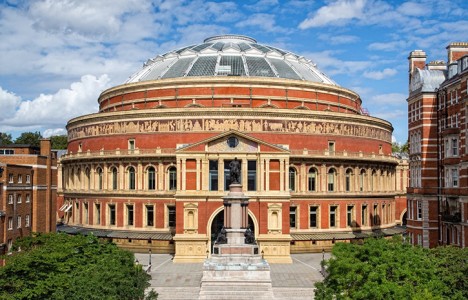One of the world's most recognisable images, the mysteries surrounding Victorian artist Frederic Leighton's Flaming June (1895) have only added to the painting's allure.
From theories of secret symbolism to rumours of famous prospective buyers, here we explore the facts and fictions that have become part of the legend.
Flaming June
1895, oil on canvas by Frederic Leighton (1830–1896) 
Lost and found
For three decades during the early twentieth century, Flaming June's whereabouts were unknown until the work re-emerged in south London in 1962. This rediscovery has added to the painting's mystique and legendary status.
It's believed the work was discovered by a builder in a house on Clapham Common which was being demolished. He carried Flaming June, still in the original enormous tabernacle frame, to a local art materials shop, looking for a quick sale. Flaming June was sold for £60, with the frame deemed more valuable than the painting. Stripped of the tabernacle, Flaming June languished, unwanted, in the little shop on Battersea Rise.
Frederic Leighton (1830–1896)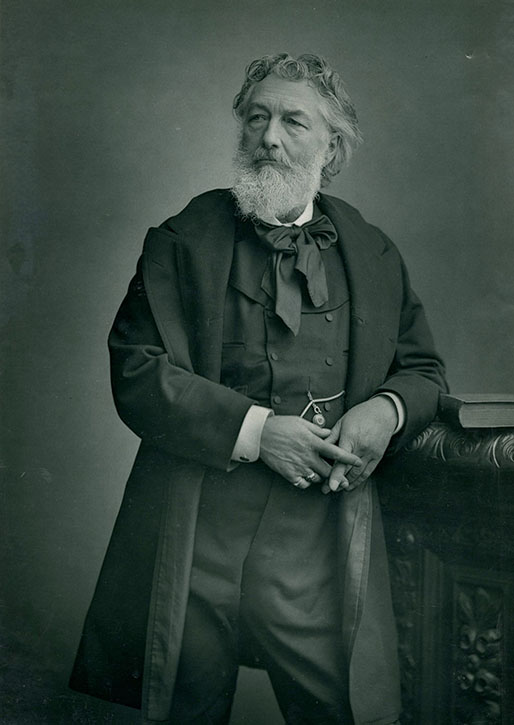
Almost bought by... Andrew Lloyd Webber?
Eventually acquired by art dealer Jeremy Maas, and hung in his Mayfair gallery in 1963, it was love at first sight for Luis A. Ferré, who purchased the masterpiece and soon after displayed it in his new Museo de Arte de Ponce in Puerto Rico.
Rumours that the artwork was spotted and almost purchased by a young Andrew Lloyd Webber (who couldn't afford the £50 to buy it) have now been disproven as it was impossible for him to have seen the work at the time.
A 'chance attitude'
Was the work based upon a sketch Leighton made of a 'chance attitude of a weary model with a supple figure' curled up for a nap in a chair? Flaming June had, in fact, been forming in Leighton's mind for years.
Studies for 'The Garden of the Hesperides' and 'Flaming June'
c.1891 & c.1894, drawings by Frederic Leighton (1830–1896) 
Through a series of studies, which remain within the Leighton House collection, we can see Leighton's experimentation with differing poses and the evolution of the final composition.
Study for 'Flaming June'
c.1894, drawing by Frederic Leighton (1830–1896) 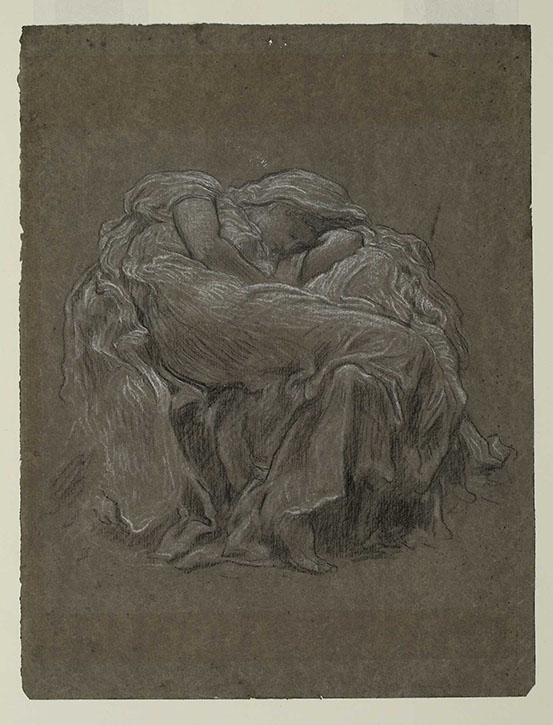
At least ten drawn studies for Flaming June also survive, with five of these at Leighton House.
Mysterious model
While it is often assumed that the model for Flaming June was Dorothy Dene, the identification of a particular model cannot be certain.
Alongside Dorothy Dene, another likely candidate is Mary Lloyd, both of whom were Leighton's principal models in his later years and feature in other artworks of this time.
Study for 'Lachrymae': Female Head
c.1894
Frederic Leighton (1830–1896) 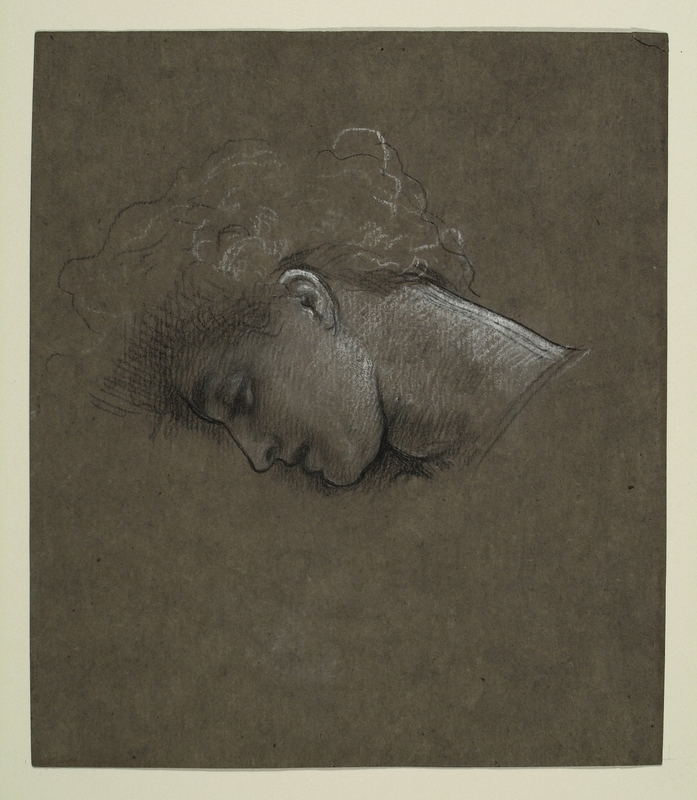
Mary Lloyd appears to have sat for both Lachrymae and 'Twixt Hope and Fear, which were amongst the works Leighton submitted to the Royal Academy in 1895 alongside Flaming June. Meanwhile, Dorothy Dene has been identified as the sitter for Clytie (1895) by Leighton's neighbour and biographer, Emilie Barrington.
Secret symbolism
Some speculate that Flaming June contains a hidden message or code, such as the inclusion of the rhododendron branch.
While the vibrant flowers add to the painting's beauty, their toxicity is seen by some to be a reminder of the fragile balance between life and death.
However, Leighton did not usually include symbolism of this kind in his pictures and, in actuality, rhododendrons could often be found in Leighton's home and artwork. This includes a c.1856 Study of Rhododendron. In a letter to his sister in 1871, following a music concert hosted in his studio, Leighton recalled: 'At the opposite end of the room in the apse was a blazing rhododendron tree, which looked glorious when it reached up into the golden semi-dome.'
Leighton's clear vision
Leighton's jewel-like preparatory Colour Sketch for 'Flaming June' (c.1895) at Leighton House unveils defining features of the finished painting – the rich orange colouring and the effect of the sunlight on the sea.
Framed colour sketch for 'Flaming June'
c.1895, painting by Frederic Leighton (1830–1896) 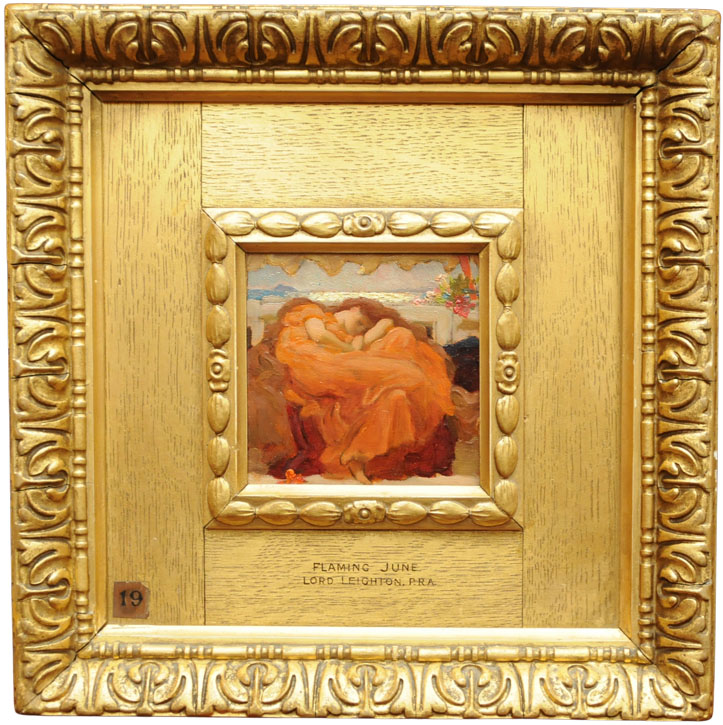
It also reveals discarded and modified elements, such as the different scalloped edge of the awning and the small island depicted on the left of the horizon that Leighton removed from the final work.
Colour sketch for 'Flaming June'
c.1895, painting by Frederic Leighton (1830–1896) 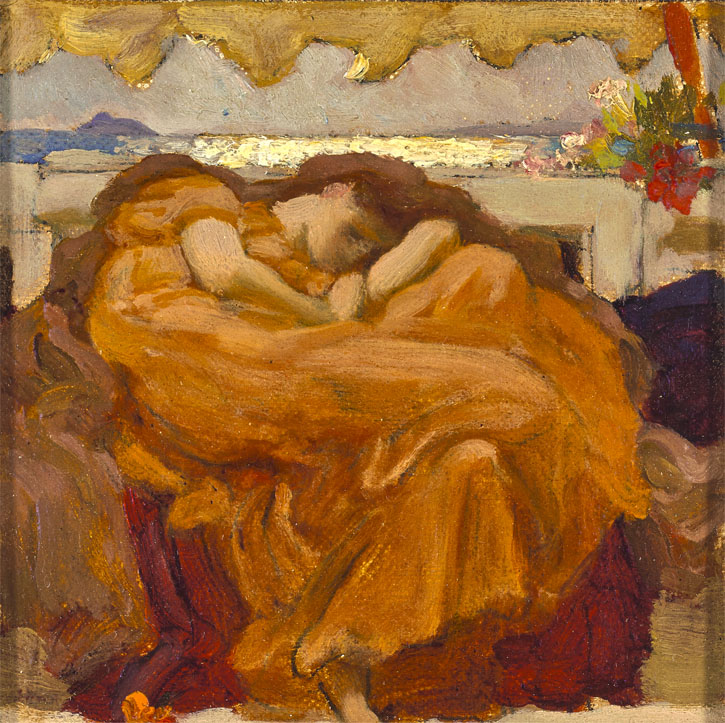
Changes at this late stage were rare for Leighton, giving added significance to this sketch as a record of Leighton's original intention for the painting.
An iconic image
Flaming June has evolved into a well-known symbol in popular culture. Since its initial reproduction in The Graphic in 1896, the ethereal figure has inspired numerous imitations and reproductions, from homeware and clothing to Annie Leibovitz's 2013 photograph of Jessica Chastain for Vogue.
Frederic Leighton's Colour Sketch for 'Flaming June' is the centrepiece of a new display at Leighton House in Kensington, presented alongside a selection of preparatory drawings from the museum's collection of works on paper. The display is located within the free-to-visit area in the museum's new wing, enabling all visitors access to an exceptional icon of nineteenth-century British art. The display coincides with the return of Flaming June to London, on show at the Royal Academy of Arts until January 2025.
Lucy Stickling, Marketing Officer, Leighton House and Sambourne House, Royal Borough of Kensington and Chelsea

